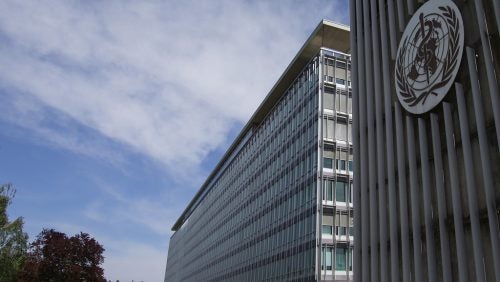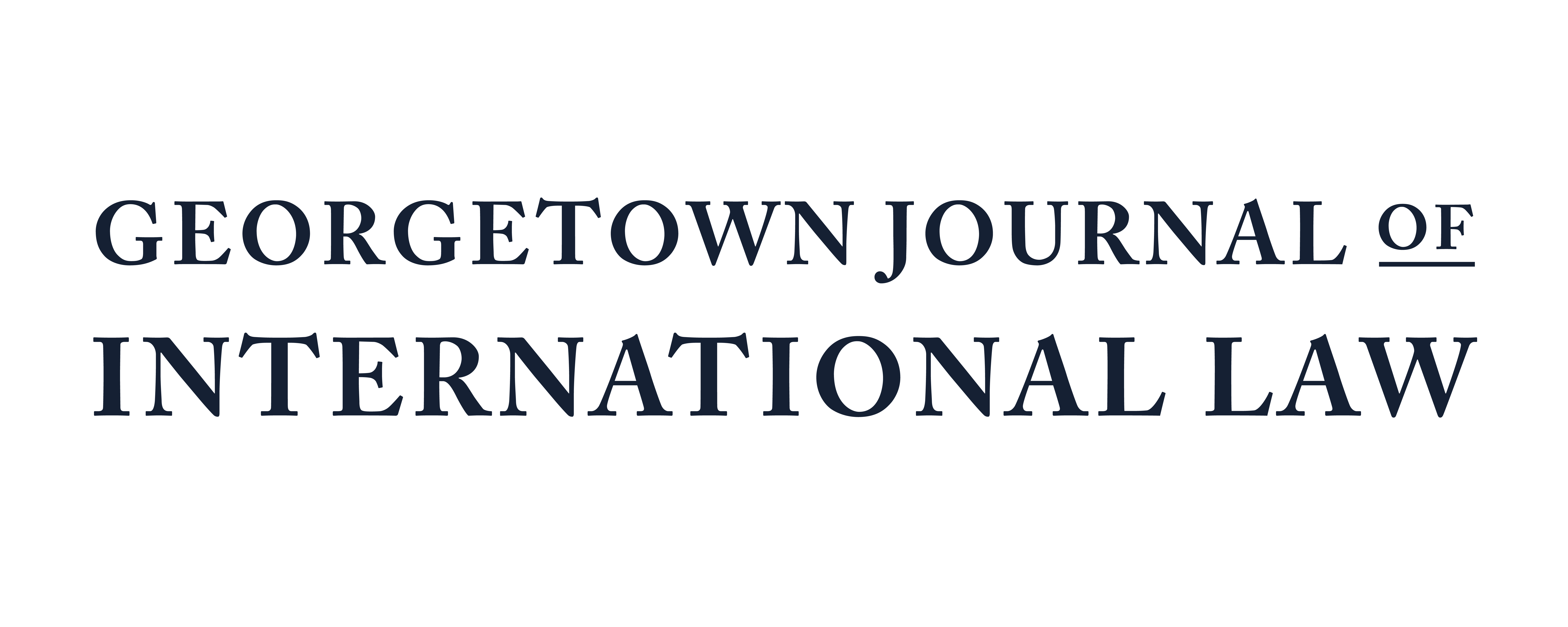Taiwan and the World Health Organization: An International Public Health Gap
November 4, 2021 by Digital Editor

The World Health Organization Headquarters in Geneva, Switzerland
by Nichole Chen
The World Health Organization (WHO), established in 1948, was created to promote global health and security and recognizes that “the enjoyment of the highest attainable standard of health is one of thefundamental rights of every human being without distinction.” However, the WHO’s state-centric institutional design, common to most international organizations, fails for non-member states such as Taiwan. As globally connected economies increase the ease of global disease transmission, Taiwan’s exclusion from the WHO has led to a gap in international public health, as seen throughout the COVID-19 pandemic.
History: Taiwan and the World Health Organization
A major issue with WHO membership is that the WHO’s Constitution was drafted upon the notion of including sovereign states. Under Article 8 of the WHO Constitution, “[t]erritories or groups of territories which are not responsible for the conduct of their international relations may be admitted as Associate Members,” but not as full members. This provision was necessary at the time of the drafting of the WHO Constitution because many non-self-governing entities were parties to the International Office of Public Hygiene and the International Sanitary Conventions, and “[i]t would have been improper not to have permitted such territories to continue their participation in the new Organization.” However, most of these former Associate Members, including Morocco, Tunisia, Sudan, the Gold Coast (Ghana), and Sierra Leone, joined the WHO after gaining independence. The WHO’s state-centric membership structure, like the structure of most United Nations (UN) organizations, has prevented Taiwan’s inclusion in the WHO.
Taiwan was a party to the WHO prior to the People’s Republic of China being recognized by the UN in 1971. In 1972, the World Health Assembly (WHA) – the decision body of the WHO – passed Resolution 25.1, a memorandum of understanding that restored China’s representative rights in the WHO and effectively ensured Taiwan had no chance of securing independent membership. Since 1997, the Taiwanese government has actively campaigned for membership, taking measures including voluntarily implementing the WHO’s international health standards. In 2005, another obstacle to Taiwan joining the organization was introduced when the WHO signed a Memorandum of Understanding with China (the exact text of which has not been released) that requires Beijing’s approval for Taiwan to participate in any and all of the WHO’s activities.
From 1997 to present, Taiwan has faced multiple obstacles to joining the WHO. With its membership dependent on support from major countries, Taiwan’s bid to be a full member of the WHO has been heavily politicized due to China’s major global presence and Taiwan’s lack of sovereignty. Additionally, its bid as an observer has been primarily dependent on official diplomatic ties with China based on the parties in power, which means Taiwan’s observer status has changed with each administration.
Taiwan’s Response to Viral Infections Over Time
Taiwan’s exclusion from the WHO creates a gap in global health governance, as seen during both the Severe Acute Respiratory Syndrome (SARS) and COVID-19 outbreaks.
The 2003 SARS epidemic highlighted the danger of Taiwan’s exclusion from international public health governance. During the SARS epidemic, Taiwan lacked diagnostic reagents and was told to seek Beijing’s aid when it contacted the WHO for help. The WHO took 50 days to respond with health experts because it needed to first obtain China’s approval. As a result, Taiwan ranked third-highest in number of SARS deaths globally. Realizing the Taiwanese government lacked health infrastructure and the WHO’s aid was dependent on China’s delayed authorization, in the aftermath of the SARS outbreak there was not only a rise in international support for Taiwan’s bid for WHO membership, but internal public health restructuring as well. As such, Taiwan’s experience with SARS – which started as a public health crisis – ultimately laid the foundation for Taiwan’s effective handling of COVID-19.
Despite its proximity to the epicenter of COVID-19 in China, Taiwan’s outbreak remained relatively contained. By the start of 202, Taiwan had seen only 8 COVID-related deaths and 900 COVID-19 cases in total, an extremely low number compared to most other countries in the world. When COVID-19 was first identified in December 2019, Taiwan’s Center for Disease Control (CDC) took several steps to manage the pandemic. First, it devised travel restrictions and health policies within a week of the identification of COVID-19, adopting health screenings for airplane passengers and wide use of infrared thermometers. Second, as the pandemic progressed, the government refined its border quarantine policy: it issued GPS tracking on government-issued phones for quarantine upon entry into Taiwan, worked with local governments to ensure compliance, and set up ‘quarantine care centers’ to provide counseling and aid for individuals in quarantine. Third, it worked with public and private healthcare providers to update guidelines established after the SARS epidemic, such as temperature checkpoints and sanitation guidelines. The CDC also monitored patient data through a centralized National Health Insurance (NHI) platform between all healthcare providers, which allowed the NHI to identify infected individuals, track spread data, and identify high-risk patients. Fourth, the CDC rationed masks through a mobile phone application to help citizens identify mask supply distribution. By mid-2020, Taiwan’s ration system meant it was able to donate masks to other countries in need.
With less than one decade between the SARS epidemic and the COVID-19 pandemic, Taiwan progressed from being a jurisdiction that lacked internal infrastructure and was in desperate need – but unable to obtain – international aid to deal with a viral disease, to becoming a jurisdiction with one of the most effective responses to a pandemic. In other words, Taiwan went from needing the WHO’s aid to being able to contribute to the pandemic response. At the same time, it continues to be excluded from the WHO and forbidden from participating in its processes, and thus cannot officially contribute to the rest of the world’s fight against COVID-19 in this forum.
Potential Solution – Revisiting the WHO’s State-Centric Model
One solution to the gap in international public health is to re-conceptualize the state-centric model of the WHO by amending the Constitution. Besides states with voting rights, Article 8 of the WHO Constitution allows associate members to participate without voting rights if they are “[t]erritories or groups of territories which are not responsible for the conduct of their international relations” and their membership is supported by a full member. Currently, only Puerto Rico and Tokelau are associate members.
The state-centric approach of the WHO mirrors the participation requirements of most UN agencies. Developed after World War II, the UN and modern international relations were organized upon state sovereignty. However, this theory of governance is ill-suited for tackling cross-border issues of the twenty-first century, which include climate change, migration, and health. Additionally, this state-centric approach does not account for sub-state actors that can influence the international arena because of their autonomous activity.
Amending the WHO Constitution to allow non-state entities to participate without voting rights would create a model more suitable for global health governance, especially as pandemics – by their nature – spread beyond state borders. By relaxing these WHO entry requirements, technical government agencies, transnational actors, and international organizations would be able to contribute to the conversation on global health governance. This would allow more specialized entities to exchange best practices, share information, and offer research and support to respond to global crises in the future.
Conclusion
Taiwan’s experience with SARS and COVID-19 has shown that whether a jurisdiction is on the receiving end of international public health assistance or in a position to provide possible solutions to a transmittable disease, exclusion from the WHO creates a gap in public health. Therefore, one potential solution is to relax the WHO’s membership requirements and allow non-state entities to participate without voting rights.
Nichole is a second-year J.D. student at the Georgetown University Law Center and serves as a Staff Editor on the Georgetown Journal of International Law. She is also a member of Georgetown’s Jessup Moot Court team. Nichole worked in various federal government agencies and private law firms prior to attending law school. She received a BA in economics and political science from the University of California, Los Angeles, where she conducted extensive research on Taiwan in the international arena.

